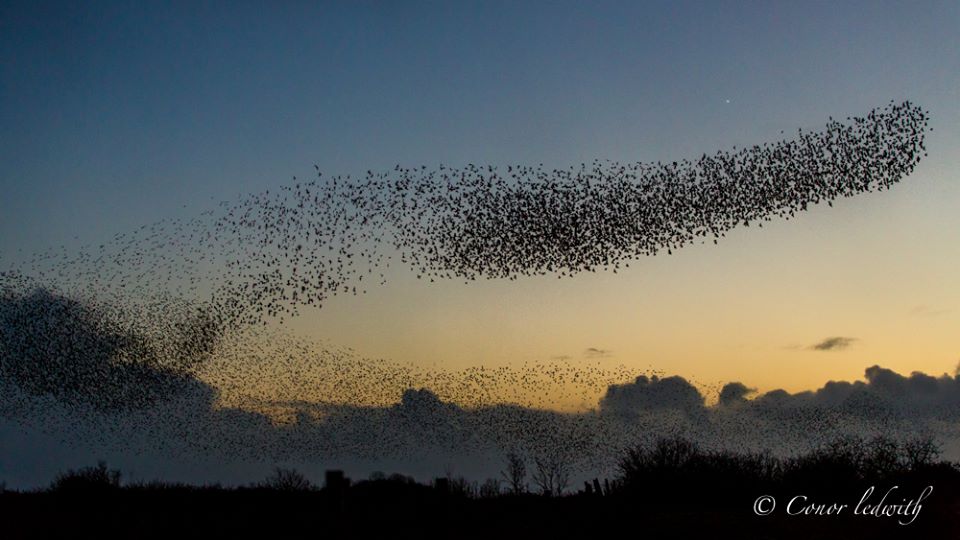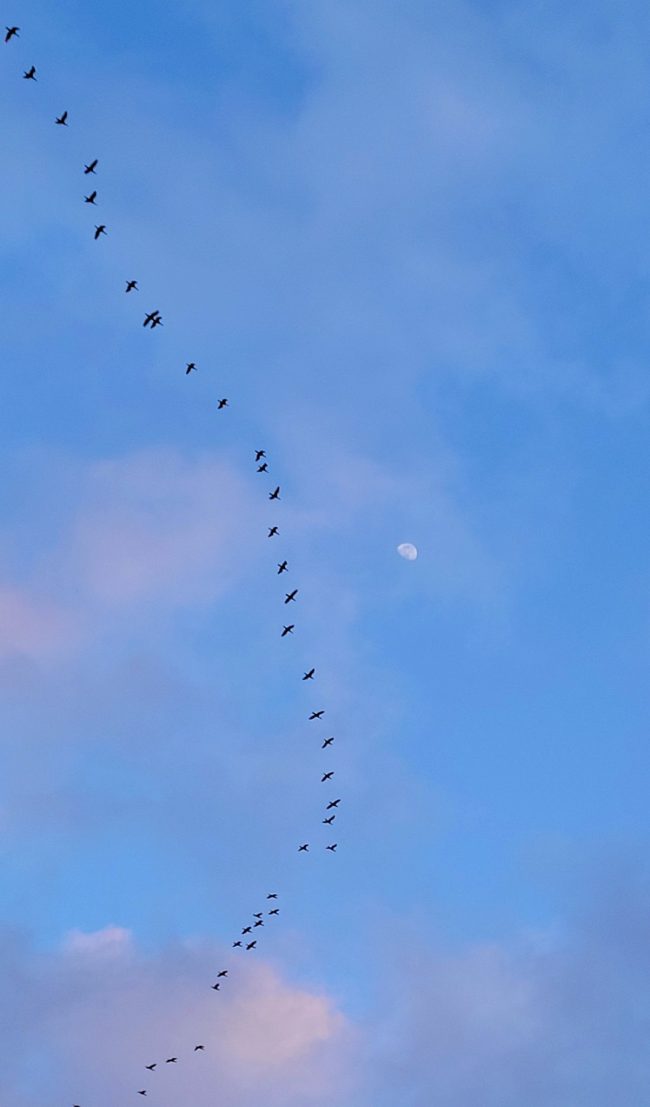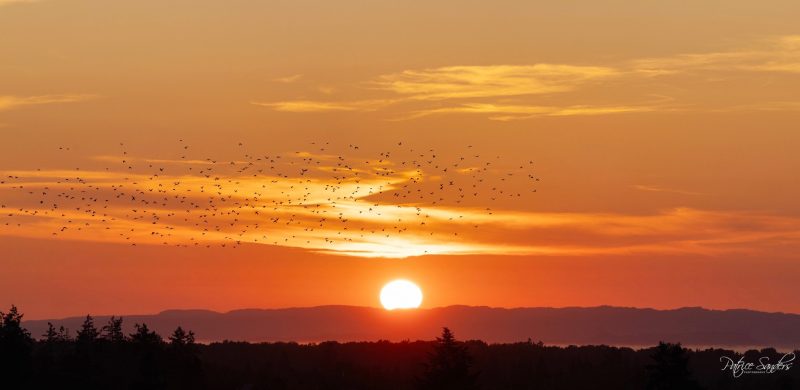Flocking birds – a starling murmuration – swooping in unison. Predators, such as peregrine falcons, have a hard time targeting one bird in an undulating flock of thousands.
Flocking birds move together
We’ve all seen flocks of birds wheeling and swooping in unison, as if choreographed. How do they do this? Zoologists say they aren’t simply following a leader or their neighbors. If they were, the reaction time of each bird would need to be very fast. In fact, it would have to be faster than birds can react, according to scientists who’ve studied the reaction times of individual birds in laboratory settings. In 1984, zoologist Wayne Potts published what’s now the classic research on how flocking birds move in unison. His paper appeared in the journal Nature and showed that birds in flocks don’t just follow a leader or their neighbors. Instead, they anticipate sudden changes in the flock’s direction of motion.
And, he said, once a change in direction begins in the flock, it then spreads through the flock in a wave.
The propagation of this maneuver wave, as he called it, begins relatively slowly but can reach speeds three times faster than would be possible if birds were simply reacting to their immediate neighbors. Potts called this ability among flocking birds the chorus line hypothesis. That is, birds are like dancers who see an approaching leg kick when it’s still down the line, and anticipate what to do. He said:
These propagation speeds appear to be achieved in much the same way as they are in a human chorus line: individuals observe the approaching maneuver wave and time their own execution to coincide with its arrival.
Crowd watches starling murmuration in Tewkesbury, England
The gif below is from Giphy, via Storyful. Giphy wrote:
People gathered in a town in Gloucestershire, England, to watch starling murmurations … Tewkesbury became a hotspot for murmurations in January, according to the BBC. Local media said residents reported several large murmurations, which prompted people to travel to the area. Wendy Turbull, who captured this video, said she traveled from Birmingham with the hope of seeing the starlings take flight. Image via Wendy Turbull via Storyful.
Photographing the flock
Potts used high-speed film – and a frame-by-frame analysis – of flocks of red-backed sandpipers (Calidris alpina) to conduct his study. He found that the flock typically responded only to birds that banked into the flock, rather than away from it.
That makes sense, since flocking among birds serves the purpose of protecting birds from predators. (Although there are other purposes as well; for example, when one bird finds food, others in a flock eat, too.) Individual birds, those who are separated from the flock, are more likely to be picked off by predators.
Photos from our community



Bottom line: According to Wayne Potts, a zoologist who published in the journal Nature in 1984, birds in flocks are able to change direction quickly not because they are following a leader or their neighbors. They can maneuver quickly because they see a movement far down the line and anticipate what to do next. Potts called this the chorus-line hypothesis for bird movement.
Want more about flocking birds? Read this article from Audubon.org











